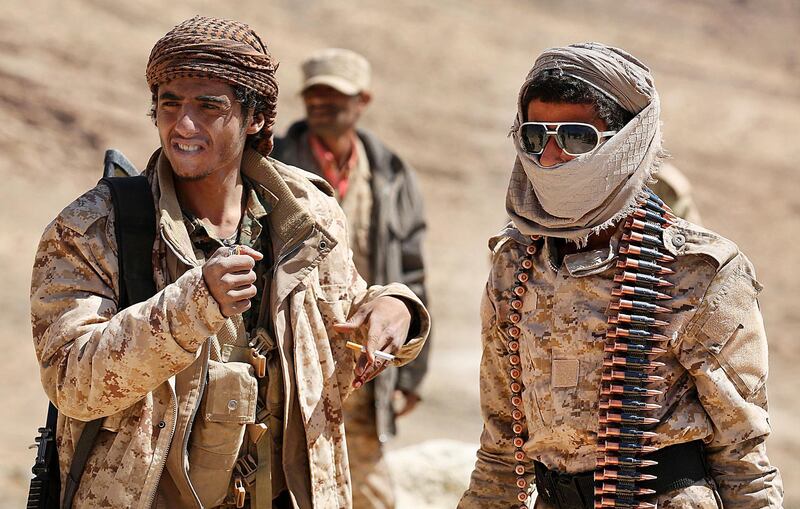The Yemeni military, backed by the Arab Coalition, captured strategic high ground critical to the battle against the Houthi militia in Hodeidah, Yemen’s rebel-held port city.
The capture of Mount Dharawiya, situated in the Baqim district of Saada province, less than 15 kilometres from the Saudi-Yemeni border, will allow government forces to control a key supply route from Hodeidah to the northern front.
Saada is the stronghold of the Iran-backed Houthi rebels, whom the Arab coalition has been fighting on behalf of the internationally recognised government since March 2015.
More than 30 Houthis were killed and two were detained in the battle, a military source told Al Arabiya news channel.
On Thursday, coalition artillery targeted Houthi military sites in Kitaf district in eastern Saada, the channel said.
The coalition also launched air strikes in neighbouring Jawf province to prevent reinforcements from reaching a rebel force trying to recapture Al Mahashima hill, a journalist based in the province, Ramzi Mukhtar, told The National.
________________
Read more:
Yemeni troops retake Haiys district from rebels
Saudi-led coalition continues battle against Houthi rebels
________________
The military is making a renewed push to capture Hodeidah, which the coalition says the Houthis are using to smuggle in weapons and launch attacks on shipping in the Red Sea.
Rebels captured the key port city in 2015. Houthis argue the coastal city should be off-limits from the battle, to prevent disruption of imports used to alleviate what is widely recognised as worst humanitarian crisis in the world.
However, several international organisations have blamed the rebels for imposing blockades that have exacerbated cases of disease and malnutrition in Yemen.
Earlier this week, the UAE armed forces — a key player in the Arab coalition — delivered aid to the residents of Haiys in Hodeidah on Tuesday after helping Yemeni forces liberate it from the Houthi rebels earlier this week.
Meanwhile, Yemen's culture and historical sites have been affected by the country's stalemated, nearly 3-year-old war. Air strikes have hit landmark buildings, museum and antiquities. Fighting has endangered others.
Ancient sites have been left neglected and unprotected, such as the Awwam Temple in Marib, which links a front-line region in the civil war to Arabia's pre-Islamic past, a time of spice caravans and the mysterious Queen of Sheba.
Experts fear the temple, as well as other historic and cultural wonders across Yemen beyond those acknowledged by international authorities, remains at risk as fighting rages on in a war that has killed more than 10,000 people.
"It's sad to see what's happening," Anna Paolini, the director of Unesco's regional office in Qatar that oversees Yemen and Gulf Arab nations, told Agence France-Presse.
One of the sites at risk is the rebel-held capital Sanaa, towards which government forces are advancing.
General Nasser Al Thebyani's, a general in the Yemeni army, is now within about 48 kilometres of the Sanaa — close enough that he is already beginning to think about the city's historic importance.
"Our plan is to surround Sanaa," Gen Al Thebyani told Bloomberg. "We don't want to destroy the historical capital. We want to save civilians and protect government buildings."
The ancient Arab city is situated in a mountain valley 2,200 metres above sea level. The capital has been continuously inhabited for almost 3,000 years and served as a centre for Arab intellectualism.
"In the 7th and 8th centuries the city became a major centre for the propagation of Islam. This religious and political heritage can be seen in the 103 mosques, 14 hammams and over 6,000 houses, all built before the 11th century. Sanaa's many-storeyed tower-houses built of rammed earth add to the beauty of the site," according to Unesco.





